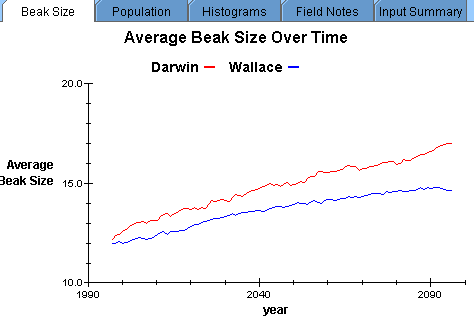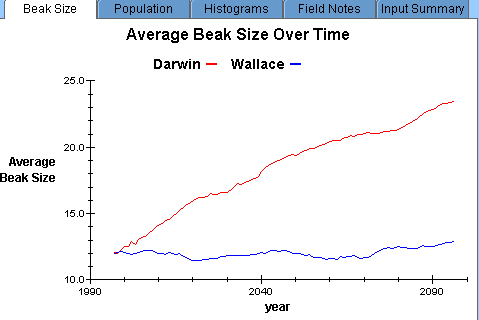 All papers examples
All papers examples
Disciplines

- MLA
- APA
- Master's
- Undergraduate
- High School
- PhD
- Harvard
- Biology
- Art
- Drama
- Movies
- Theatre
- Painting
- Music
- Architecture
- Dance
- Design
- History
- American History
- Asian History
- Literature
- Antique Literature
- American Literature
- Asian Literature
- Classic English Literature
- World Literature
- Creative Writing
- English
- Linguistics
- Law
- Criminal Justice
- Legal Issues
- Ethics
- Philosophy
- Religion
- Theology
- Anthropology
- Archaeology
- Economics
- Tourism
- Political Science
- World Affairs
- Psychology
- Sociology
- African-American Studies
- East European Studies
- Latin-American Studies
- Native-American Studies
- West European Studies
- Family and Consumer Science
- Social Issues
- Women and Gender Studies
- Social Work
- Natural Sciences
- Anatomy
- Zoology
- Ecology
- Chemistry
- Pharmacology
- Earth science
- Geography
- Geology
- Astronomy
- Physics
- Agriculture
- Agricultural Studies
- Computer Science
- Internet
- IT Management
- Web Design
- Mathematics
- Business
- Accounting
- Finance
- Investments
- Logistics
- Trade
- Management
- Marketing
- Engineering and Technology
- Engineering
- Technology
- Aeronautics
- Aviation
- Medicine and Health
- Alternative Medicine
- Healthcare
- Nursing
- Nutrition
- Communications and Media
- Advertising
- Communication Strategies
- Journalism
- Public Relations
- Education
- Educational Theories
- Pedagogy
- Teacher's Career
- Statistics
- Chicago/Turabian
- Nature
- Company Analysis
- Sport
- Paintings
- E-commerce
- Holocaust
- Education Theories
- Fashion
- Shakespeare
- Canadian Studies
- Science
- Food Safety
- Relation of Global Warming and Extreme Weather Condition
Paper Types

- Movie Review
- Essay
- Admission Essay
- Annotated Bibliography
- Application Essay
- Article Critique
- Article Review
- Article Writing
- Assessment
- Book Review
- Business Plan
- Business Proposal
- Capstone Project
- Case Study
- Coursework
- Cover Letter
- Creative Essay
- Dissertation
- Dissertation - Abstract
- Dissertation - Conclusion
- Dissertation - Discussion
- Dissertation - Hypothesis
- Dissertation - Introduction
- Dissertation - Literature
- Dissertation - Methodology
- Dissertation - Results
- GCSE Coursework
- Grant Proposal
- Admission Essay
- Annotated Bibliography
- Application Essay
- Article
- Article Critique
- Article Review
- Article Writing
- Assessment
- Book Review
- Business Plan
- Business Proposal
- Capstone Project
- Case Study
- Coursework
- Cover Letter
- Creative Essay
- Dissertation
- Dissertation - Abstract
- Dissertation - Conclusion
- Dissertation - Discussion
- Dissertation - Hypothesis
- Dissertation - Introduction
- Dissertation - Literature
- Dissertation - Methodology
- Dissertation - Results
- Essay
- GCSE Coursework
- Grant Proposal
- Interview
- Lab Report
- Literature Review
- Marketing Plan
- Math Problem
- Movie Analysis
- Movie Review
- Multiple Choice Quiz
- Online Quiz
- Outline
- Personal Statement
- Poem
- Power Point Presentation
- Power Point Presentation With Speaker Notes
- Questionnaire
- Quiz
- Reaction Paper
- Research Paper
- Research Proposal
- Resume
- Speech
- Statistics problem
- SWOT analysis
- Term Paper
- Thesis Paper
- Accounting
- Advertising
- Aeronautics
- African-American Studies
- Agricultural Studies
- Agriculture
- Alternative Medicine
- American History
- American Literature
- Anatomy
- Anthropology
- Antique Literature
- APA
- Archaeology
- Architecture
- Art
- Asian History
- Asian Literature
- Astronomy
- Aviation
- Biology
- Business
- Canadian Studies
- Chemistry
- Chicago/Turabian
- Classic English Literature
- Communication Strategies
- Communications and Media
- Company Analysis
- Computer Science
- Creative Writing
- Criminal Justice
- Dance
- Design
- Drama
- E-commerce
- Earth science
- East European Studies
- Ecology
- Economics
- Education
- Education Theories
- Educational Theories
- Engineering
- Engineering and Technology
- English
- Ethics
- Family and Consumer Science
- Fashion
- Finance
- Food Safety
- Geography
- Geology
- Harvard
- Healthcare
- High School
- History
- Holocaust
- Internet
- Investments
- IT Management
- Journalism
- Latin-American Studies
- Law
- Legal Issues
- Linguistics
- Literature
- Logistics
- Management
- Marketing
- Master's
- Mathematics
- Medicine and Health
- MLA
- Movies
- Music
- Native-American Studies
- Natural Sciences
- Nature
- Nursing
- Nutrition
- Painting
- Paintings
- Pedagogy
- Pharmacology
- PhD
- Philosophy
- Physics
- Political Science
- Psychology
- Public Relations
- Relation of Global Warming and Extreme Weather Condition
- Religion
- Science
- Shakespeare
- Social Issues
- Social Work
- Sociology
- Sport
- Statistics
- Teacher's Career
- Technology
- Theatre
- Theology
- Tourism
- Trade
- Undergraduate
- Web Design
- West European Studies
- Women and Gender Studies
- World Affairs
- World Literature
- Zoology
Experimental Report for EvolutionLab, Lab Report Example
Hire a Writer for Custom Lab Report
Use 10% Off Discount: "custom10" in 1 Click 👇
You are free to use it as an inspiration or a source for your own work.

Introduction
According to Charles Darwin’s theory of natural selection, traits are passed down over time if they allow a species to survive and reproduce. The alteration of traits that occur due to as a consequence of this phenomenon contribute to the evolution of a species, which allows them to change slowly over time. Ultimately, this results in extinction of some species who are unable to adapt or divergence of species that adapt to the environment differently.
In his experiments, Darwin postulated that the finches living in the Galapagos Islands currently have different beak sizes due to a divergent event that occurred during their evolutionary history. Since different food was available, some birds would eat small soft seeds and others would use hard seeds. Birds with small beaks were more efficient at eating small soft seeds and birds with large beaks were more efficient at eating large hard seeds. Therefore, these birds evolved in a manner that allowed more efficient food consumption in periods of food shortage.
Although Darwin stated that for a trait to evolve through natural selection, it must affect survivorship and reproduction, I hypothesize that it must also have variation among individuals for the trait the variation in the trait must be heritable.
Experimental Design
To determine how a trait must be heritable among individuals for a trait to evolve through natural selection, I kept beak size and variance constant for Darwin and Wallace Island, in addition to clutch size, island size, and precipitation. However, I changed heritability to 0.70 on Darwin Island and lowered it to 0.4 on Wallace Island. I recorded the results after leaving the population for 100 years.
To determine how a trait must have variation among individuals for a trait to evolve through natural selection, I kept beak size, clutch size, island size, and precipitation constant between the two islands, but changed variance to 2.0 for Darwin Island and 0.5 for Wallace Island. I recorded the results after leaving the population for 100 years.
Results

Figure 1 Heritability as a variable for natural selection
Figure 1 shows that the decrease heritability of beak size resulted in birds with smaller beaks on Wallace Island than on Darwin Island. This processes was slow, and the most noticeable different occurs in 2090, indicating that beak size continues to diverge over time. Ultimately, when a trait is inherited less, it is less likely to contribute to the population’s genetics.

Figure 2 Variability as a trait for natural selection
Figure 2 shows that there is a major difference between the beak size of the birds on Wallace Island and Darwin Island, beginning when the variability was selected. The birds on Darwin Island were given a wider range of beak size, so larger beaks were able to continue into the future, while the birds on Wallace Island were given a smaller beak size so this did not happen. It is unlikely that the birds on Wallace Island will recover a large beak size.
Discussions and Conclusions
These observations support the hypothesis that heritability and variability are necessary for the evolution of traits through natural selection. Altering these two values showed great differences in the traits that were observed in the future. If a trait started out reduced because of my controls, it was likely to continue to be reduced in the future. Ultimately, when these two principles work together, they can diminish a trait from the population even more quickly.
Works Cited
Darwin, C. On the Origin of Species by Means of Natural Selection, or the Preservation of Favored Races in the Struggle for Life. New York: New American Library, 1963.
Gould, S. J. “The Evolution of Life on the Earth.” Scientific American, October 1994.
Grant, P. R. “Natural Selection and Darwin’s Finches.” Scientific American, January 1991
Weiner, J. The Beak of the Finch: A Story of Evolution in Our Time. New York: A. Knopf, 1994.

Stuck with your Lab Report?
Get in touch with one of our experts for instant help!
Tags:

Time is precious
don’t waste it!
writing help!


Plagiarism-free
guarantee

Privacy
guarantee

Secure
checkout

Money back
guarantee

